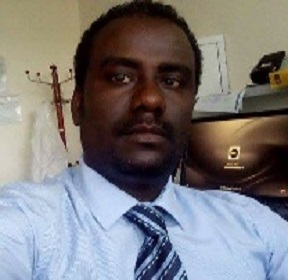
Jemal Hassen Ali
EthiopiaTitle: Time to HIV viral load suppression and its associated factors in cohort of patients taking antiretroviral treatment in East Shewa zone, Oromiya, Ethiopia, 2018
Abstract:
Human immunodeficiency virus (HIV) is a virus transmitted through different body fluids such as blood and semen (2). United nation set goal to ending the AIDS epidemic by 2030 as part of the sustainable development goals (SDG)(3,4) Sustainable development goals set target in which: By 2020, 90% of all people living with HIV will know their HIV status, 90% of all people with diagnosed HIV infection will receive sustained antiretroviral therapy and 90% of all people receiving antiretroviral therapy will have viral suppression. When this goal is achieved, it is believed that at least 73% of all people living with HIV worldwide will be virally suppressed (5,6). Determination of Viral load in the patient plasma is the most important indicator of response to ART. The objective of this study was to determine the time to virological suppression and its associated factors among people living with HIV taking antiretroviral treatments in East Shewa zone, Oromiya, Ethiopia, 2018. Patients diagnosed with Human Immunodeficiency Virus presenting to the study health centers between October 3, 2011 and March 1, 2013 were included in the study Retrospective cohort study design was used to conduct the study. In this study, 243 study participants who have baseline HIV viral load measurement were included in the study. The study used secondary data from a long-running community-recruited prospective cohort of patients living with HIV. HIV Plasma Viral load measurement was taken at enrollment of patient to the study (Baseline), and then after the first month, third month, six months and twelve months and eighteen months of ART treatment. Significance group comparison was done by Kaplan Meier log-rank test. Cox proportional hazard model was used to select significant factors to the variability between groups. Plasma viral load was suppressed below the detection level in 72% of individuals taking a different regimen of ART. The median Human Immunodeficiency virus (HIV)-1 plasma viral load in the cohort was estimated to be log5.3111 copies/ml. The study observed Survival curve difference in the category of marital status (p-value 0.023) and CD4 value (p-value 0.023). The estimated median time to Plasma Viral Load (PVL) suppression was 181 days (CI: 140.5–221.4) with the age group of 30–39 years having minimum time to achieve suppression with 92 days (CI: 60.1–123.8) and the maximum time required to reach the level was found among the age group between 50 and 59 years. The study found that the estimated time to achieve PVL after taking ART to be 181 days. Factors affecting time to suppression level were marital status and baseline CD4.
Biography:
Jemal Hassen Ali is Medical Laboratory technologist by profession. He Masters of Public Health in Field Epidemiology laboratory track supported by CDC-Ethiopia. He has 10 years of work experience as laboratory technologist and one years of experience as Field Epidemiologist. Due to current issue of 90-90-90, He has presented his finding at US Embassy, Ethiopia with coordination of CDC-Ethiopia and PEPFAR. In the years he worked as technologist, he participated in different areas of specialties including experience in provide training for health professionals working in primary health care across the country, conduct supportive supervision in zonal, Hospital and health centers. He has also working experience in clinical and public health laboratory diagnosis in areas of TB (liquid and solid) culture, clinical microbiology, Immuno-heamatology and food and water quality test. He is currently working as coordinator for public health laboratory, Adama public health rsearch and referral laboratory service, Adama, Oromiya, Ethiopia.

